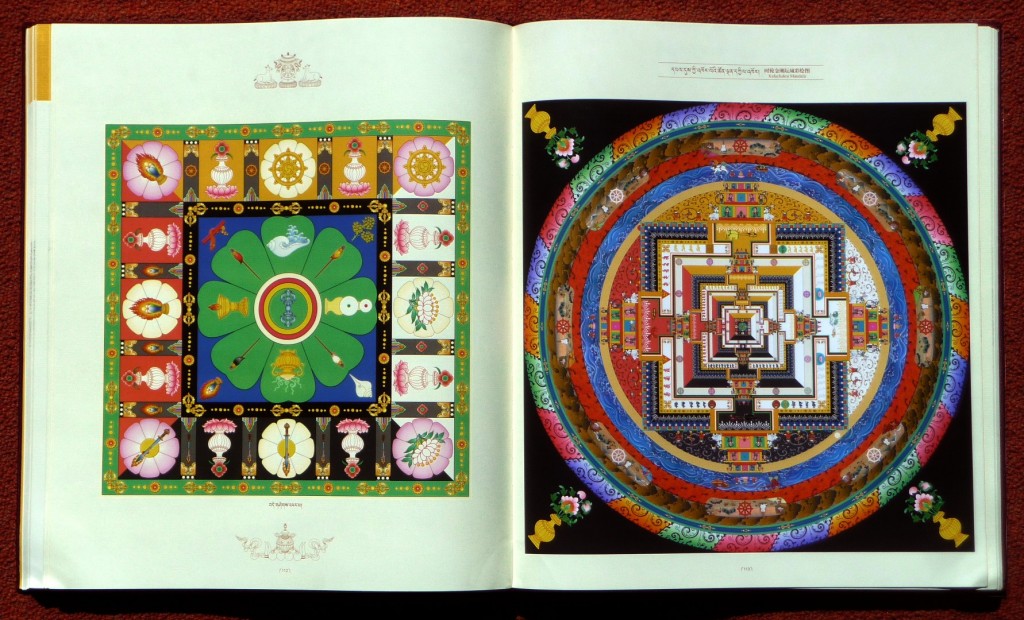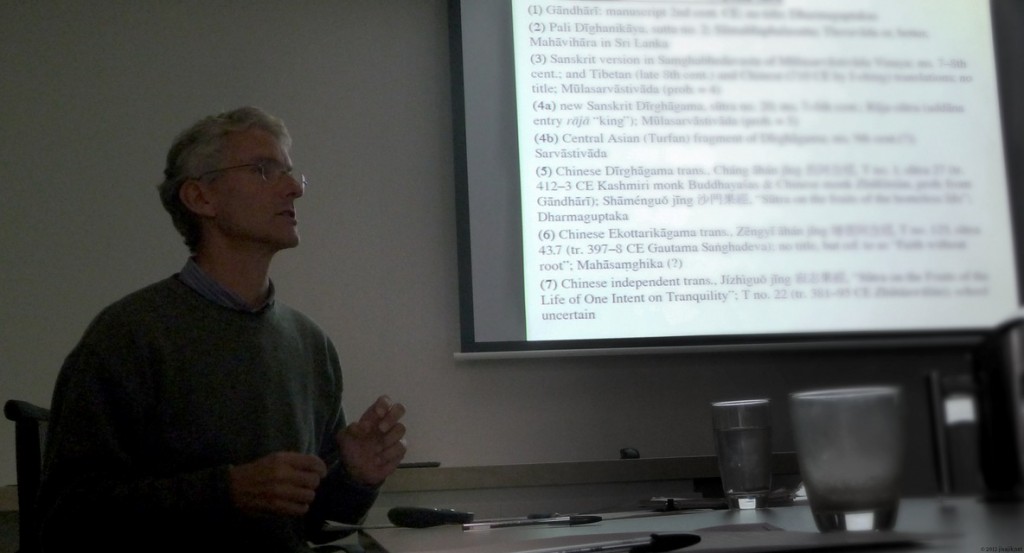Seishi Karashima. ‘Was the Aṣṭasāhasrikā Prajñāpāramitā Compiled in Gandhāra in Gāndhārī?’ Annual Report of the International Research Institute for Advanced Buddhology (ARIRIAB) at Soka University for the Academic Year 2012, vol.XVI, 2013, pp.171–188. [PDF]
This is a remarkable piece of detective work and a milestone in the study of the Mahāyāna, whether or not one thinks (as I do) that Prof. Karashima’s theory nails it. Karashima’s many years of lexicographical toil seem to have finally paid off: the earliest Chinese phonetic transcriptions from the Aṣṭasāhasrikā agree most fully with the newly found Gāndhārī fragments (for which see also Strauch 2007). And that, moreover, is merely one of many compelling indicators pointing to the composition of the text in Gandhāra.
One minor comment: the image of Dharmodgata discovering the Prajñāpāramitā written on gold plates vilīnena vaidūryeṇa — in “melted” lapis, according to Karashima (p.181) — sounds excessively fantastic. The reference is to lapis lazuli pigment, well known to medievalists as ultramarine, ‘beyond the sea’ — i.e., from Afghanistan.




